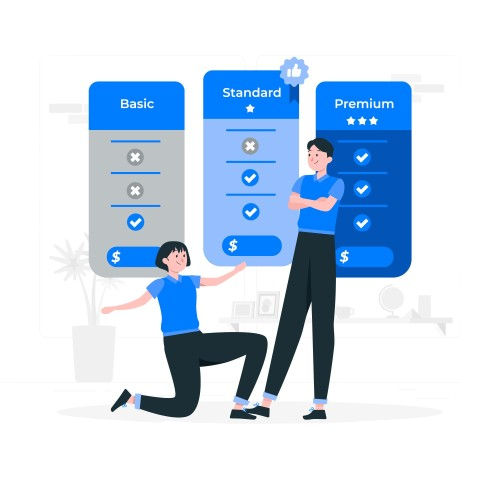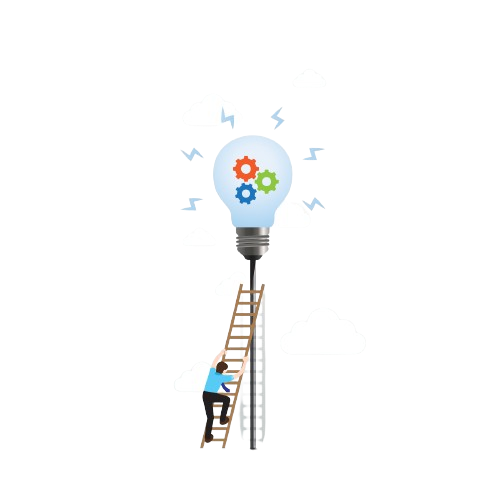
In the dynamic landscape of modern business, where the winds of change blow with unprecedented force, the question arises: Is your business future-proof? As industries continue to evolve, traditional models are giving way to more innovative and flexible approaches, with subscription-based models taking center stage. In this deep dive, let’s navigate the intricacies of intelligent SaaS subscription management software, which is a transformative force that can be the key to not only surviving but thriving in the ever-shifting tides of commerce.
The Rise of Subscription Management Software: A Paradigm Shift in Consumer Behavior

The rise of software to manage subscriptions heralds a transformative era in contemporary business, this software has redefined how organizations like yours engage with customers and structure their revenue models.
One of the main reasons behind the rise of software to manage subscriptions is due to the constant need for businesses to adapt to the complexity of the subscription management world. As the subscription-based economy gained momentum, it also provided businesses with efficient tools to help them navigate into the world of subscription management. This shift represents a departure of businesses from conventional transactional approaches, as intelligent SaaS subscription management software equipped them with tools that helped them streamline their subscription processes, automate their billing cycles, and enhance overall customer experiences. SaaS subscription management software became the linchpin in the evolution of subscription management software due to its offerings like automation for efficiency, the capability of helping businesses to personalized customer experiences, scalability, and data-driven insights.
This software to manage subscriptions is not just addressing the immediate challenges of subscription management but is designed to be scalable, adaptable, and future-proof, which can position your businesses to thrive in an environment where subscription services are at the forefront of consumer preferences. The benefits of this intelligent software to manage subscriptions extend across industries as well, for example from software services to e-commerce, where businesses leverage the power of these tools to optimize revenue, this software can enhance customer loyalty, and help businesses stay agile in response to market changes.
Now that you have learned about the rise of traditional software to manage subscriptions, let’s look into the challenges that led to the evolution of intelligent SaaS subscription management software.
Challenges in Traditional Approaches: Navigating the Complexity

The adoption of subscription-based models has witnessed unprecedented growth across various industries, which has reshaped the way businesses interact with consumers. However, this transformative shift came with its own set of challenges, particularly in the realm of traditional subscription management software. Some of the common challenges associated with traditional software to manage subscriptions that led to the evolution of intelligent SaaS subscription management software include:
- Manual Processes and Inefficiencies
Traditional software to manage subscriptions often relies on manual processes, including data entry, subscription creation, and billing. This manual intervention can not only increase the likelihood of errors but pose significant challenges as your business scales. With your growing subscriber base, managing subscriptions and billing cycles manually can become increasingly inefficient for you, which can also lead to delays, inaccuracies, and operational bottlenecks.
- Billing Inaccuracies and Revenue Leakage
One of the primary challenges in traditional software to manage subscriptions lies in its billing inaccuracies. Manual billing processes are prone to errors, ranging from miscalculations to incorrect data entry. These inaccuracies can lead to the leakage of your revenue and result in eroding the financial health of your business. Besides, the importance of accurate billing cannot be overstated, as it directly impacts the trust of your customers and the overall sustainability of your subscription-based revenue models.
- Lack of Scalability
The scalability of traditional software to manage subscriptions is a significant concern especially if your business is experiencing growth. With manual processes and legacy systems, you may struggle to scale with the increasing volume and complexity of subscriptions, and this lack of scalability can hamper your ability to adapt to changing market dynamics, and eventually hinder your potential for expansion and innovation.
- Limited Flexibility in Subscription Plans
Traditional software to manage subscriptions often comes with limitations in terms of offering diverse and flexible subscription plans. This issue can limit your growth, if you aim to experiment with different pricing models, introduce new subscription tiers, or adapt to evolving customer preferences.
- Customer Experience Challenges
A positive customer experience is crucial for the success of your subscription-based businesses. However traditional approaches may fall short in providing you with a seamless and personalized experience for your subscribers. This is because manual subscription management often leads to delays in processing changes, responding to customer queries, and addressing issues, which can impact overall customer satisfaction and loyalty.
- Integration Issues with Other Systems
Legacy software to manage subscriptions may face challenges in integrating with other essential business systems. As the need for relying on an ecosystem of tools and applications for various functions, the lack of seamless integration can result in data silos, inefficiencies, and a fragmented view of customer information in your organization. This, in turn, can impede your ability to derive actionable insights and make informed decisions.
- Compliance and Security Concerns
With the increasing focus on data privacy and regulatory compliance, you might not succeed in meeting stringent security standards with traditional software to manage subscriptions. However, compliance with data protection regulations has become a critical concern, especially when you are dealing with sensitive customer information. In this era where data breaches can have severe consequences, you need software to manage subscriptions that prioritize robust security measures.
- Inability to Adapt to Market Trends
The business landscape is dynamic, and market trends are evolving rapidly. In this scenario, traditional software to manage subscriptions, with its inherent inflexibility, may not be the best choice for you if you aim to adapt to emerging market trends and changing consumer expectations. Besides, if you fail to swiftly adjust your subscription offerings in response to market shifts, you will be at risk of falling behind your competitors and losing your relevance.
- High Costs of Maintenance and Upgrades
Maintaining and upgrading traditional software to manage subscriptions can incur significant costs. Often this traditional software to manage subscriptions requires extensive customization and ongoing maintenance to address your evolving needs and compliance requirements. This financial burden of maintaining outdated systems can divert your resources that you could otherwise invest in more innovative and future-proof solutions.
- Lack of Data-Driven Insights
Last but not least, the power of data-driven decision-making is a cornerstone of modern business success. But with traditional software to manage subscriptions that lacks advanced analytics capabilities, your chances of receiving actionable insights into subscriber behavior, preferences, and market trends are limited to none. This absence of robust analytics can hinder your strategic planning and limit your ability to optimize your subscription offerings for maximum impact.
Evolution of Intelligent Subscription Management Software: A Beacon of Efficiency
 The inefficiencies in traditional software to manage subscriptions resulted in the evolution of intelligent SaaS subscription management software. Intelligent SaaS subscription management software emerges as a beacon, guiding businesses like yours through the labyrinth of subscription intricacies. This cutting-edge technology employs automation, artificial intelligence, and advanced analytics to streamline processes, elevate customer experiences, and fortify overall business efficiency.
So, let’s embark on a comprehensive exploration of the key features that make this software a linchpin in future-proofing your business.
The inefficiencies in traditional software to manage subscriptions resulted in the evolution of intelligent SaaS subscription management software. Intelligent SaaS subscription management software emerges as a beacon, guiding businesses like yours through the labyrinth of subscription intricacies. This cutting-edge technology employs automation, artificial intelligence, and advanced analytics to streamline processes, elevate customer experiences, and fortify overall business efficiency.
So, let’s embark on a comprehensive exploration of the key features that make this software a linchpin in future-proofing your business.
Key Features of Intelligent Subscription Management Software
 The key features of intelligent SaaS subscription management software that make it a powerful alternative to traditional software to manage subscriptions include:
The key features of intelligent SaaS subscription management software that make it a powerful alternative to traditional software to manage subscriptions include:
- Automation for Seamless Processes
- Personalized Customer Experiences
- Scalability and Flexibility
- Data-Driven Insights
- Enhanced Billing Accuracy
- Intelligent Workflows for Proactive Issue Resolution
- Integration Capabilities
- Audit Trails for Compliance and Security
- Customer Communication Tools
Future Trends in Subscription Management: What Lies Ahead
 The future of software to manage subscriptions is poised for exciting advancements as businesses continue to adapt to the evolving landscape of subscription-based models. Some of the key trends that are most likely to shape the trajectory of SaaS subscription management software, offering a glimpse into what lies ahead include:
The future of software to manage subscriptions is poised for exciting advancements as businesses continue to adapt to the evolving landscape of subscription-based models. Some of the key trends that are most likely to shape the trajectory of SaaS subscription management software, offering a glimpse into what lies ahead include:
- Integration of Advanced Technologies
- Blockchain for Enhanced Security
- Expansion of Predictive Analytics
- Focus on Sustainability and Ethical Practices